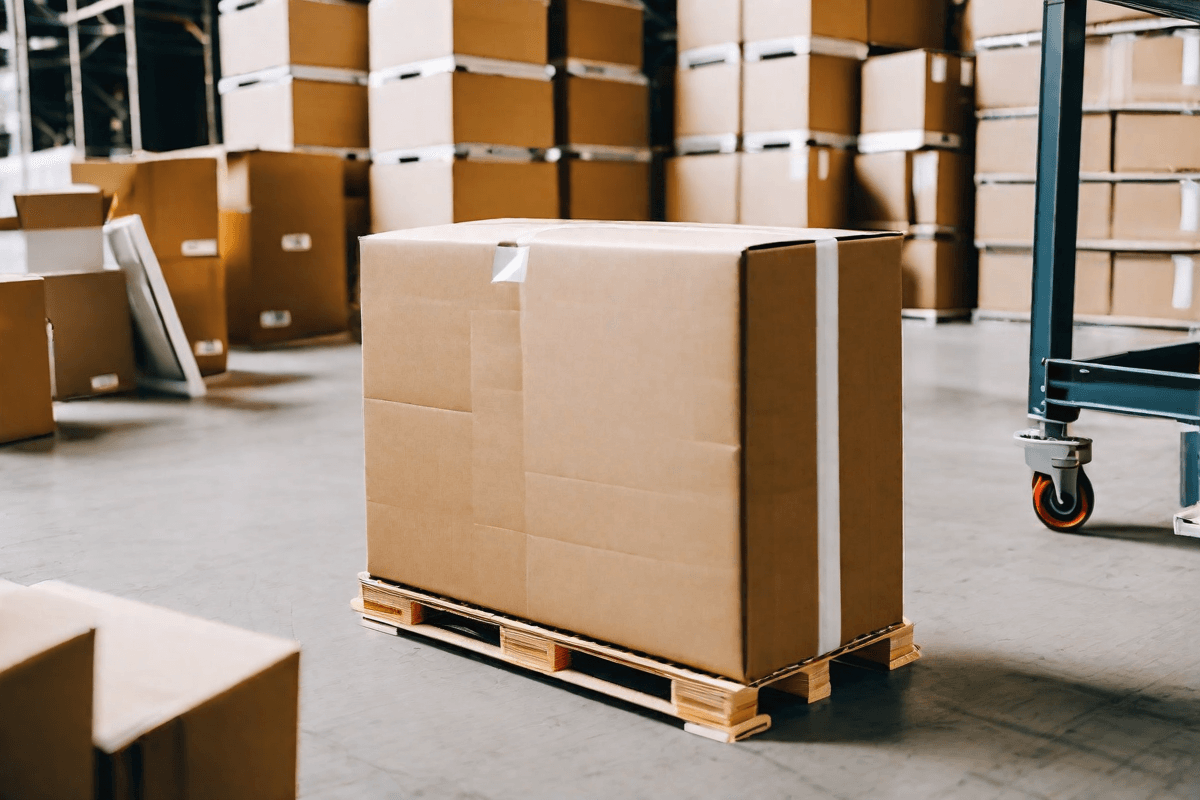
Expanding Globally with Amazon: Selling Internationally on Amazon Marketplaces
Are you an Amazon seller looking to expand your business on a global scale? Selling on Amazon's international marketplaces can be a lucrative opportunity to reach new customers and grow your sales revenue. In this article, we'll explore the key steps and strategies for successfully selling on Amazon's global marketplaces.
Understanding Amazon's Global Marketplaces
Amazon operates marketplaces in over 15 countries, spanning North America, Europe, Asia, and Australia. Each marketplace has its own unique characteristics, including customer preferences, local regulations, and competition. As a seller, it's important to research and understand each marketplace you're considering selling on.
When you're considering expanding your business to Amazon's global marketplaces, you need to keep in mind that each marketplace has its own set of rules, regulations, and cultural nuances that can affect your sales. For example, while Amazon.com (United States) is the largest marketplace in the world, Amazon.co.jp (Japan) has a strong preference for domestic sellers. Understanding these differences can help you tailor your product offerings and marketing strategies to each marketplace, increasing your chances of success.
An Overview of Amazon's International Marketplaces
Amazon's global marketplaces include:
- Amazon.com (United States)
- Amazon.ca (Canada)
- Amazon.co.uk (United Kingdom)
- Amazon.de (Germany)
- Amazon.fr (France)
- Amazon.es (Spain)
- Amazon.it (Italy)
- Amazon.co.jp (Japan)
- Amazon.com.mx (Mexico)
- Amazon.com.au (Australia)
- Amazon.in (India)
- Amazon.com.br (Brazil)
- Amazon.nl (Netherlands)
- Amazon.sg (Singapore)
- Amazon.sa (Saudi Arabia)
Each of these marketplaces has its own unique characteristics. For example, Amazon.co.uk (United Kingdom) is known for its strong demand for fashion and beauty products, while Amazon.co.jp (Japan) has a strong preference for domestic sellers. Understanding these differences can help you tailor your product offerings and marketing strategies to each marketplace, increasing your chances of success.
Key Benefits of Selling on Amazon's Global Marketplaces
Selling on Amazon's global marketplaces can bring several benefits, including:
- Access to a larger customer base: By expanding your business to multiple marketplaces, you can reach customers all over the world, increasing your sales potential.
- Increased sales revenue potential: By tapping into new markets, you can increase your sales revenue potential and grow your business.
- Opportunity to diversify your product offerings: Each marketplace has its own unique customer base and preferences, giving you the opportunity to expand your product offerings and diversify your business.
- Reduced dependence on a single marketplace: By expanding your business to multiple marketplaces, you can reduce your dependence on a single marketplace and protect your business from sudden changes or disruptions.
Expanding your business to Amazon's global marketplaces can be a great way to grow your business and reach new customers. By researching and understanding each marketplace, you can tailor your product offerings and marketing strategies to each marketplace, increasing your chances of success.
Setting Up Your International Amazon Seller Account
Are you looking to expand your business and start selling on Amazon's international marketplaces? If so, you'll need to set up a global selling account. Here are the key steps to get started:
Registering for an Amazon Global Selling Account
First, you'll need to register for a global selling account. To do this, visit the Amazon Global Selling website and select the marketplace you want to sell on. Amazon has marketplaces in countries all around the world, from the United States and Canada to Japan and Australia.
When registering for your global selling account, you'll need to provide some basic information about your business. This includes your company name, business address, tax identification number, and bank account information. It's important to have all of this information ready before you start the registration process so that you can complete it quickly and easily.
Once you've provided all of the necessary information, Amazon will review your application and verify your business details. This process usually takes a few days, but it can take longer in some cases.
Navigating Amazon's Unified Accounts
Amazon's unified accounts make it easy to manage your selling activity across multiple marketplaces from a single login. This can simplify account management and enable you to optimize your sales strategy across markets.
To set up a unified account, follow the instructions on the Amazon Global Selling website. You'll need to link your existing seller accounts or create new accounts for each marketplace you want to sell on. Once your accounts are linked, you can manage your inventory, pricing, and orders from a single dashboard.
Keep in mind that each marketplace has its own set of rules and regulations, so it's important to familiarize yourself with the requirements for each marketplace you want to sell on. This includes things like product restrictions, tax laws, and shipping requirements.
By setting up a global selling account and navigating Amazon's unified accounts, you can expand your business and reach new customers around the world. So why wait? Start your international selling journey today!
Choosing the Right Amazon Marketplace for Your Business
When it comes to selling on Amazon, choosing the right marketplace can make all the difference for your business. With Amazon's global reach, it's important to consider which marketplaces will provide the best opportunities for your products.
Evaluating Market Demand and Competition
Before entering a new marketplace, it's crucial to research the local demand for your products. This can help you determine which marketplaces will be the most profitable for your business. Amazon provides tools such as Marketplace Insights to help sellers analyze market demand and competition.
Marketplace Insights can help you identify which products are in high demand in specific regions, as well as the level of competition for those products. By analyzing this data, you can make informed decisions about which marketplaces to sell on.
Considering Local Regulations and Requirements
Each Amazon marketplace has its own set of regulations and requirements that sellers must comply with. These can include product certification, labeling, and packaging requirements, as well as tax and customs regulations.
It's important to thoroughly research the regulations and requirements for each marketplace you sell on to ensure compliance. Failure to comply with these regulations can result in fines, penalties, and even account suspension.
For example, if you're selling products in the European Union, you'll need to comply with the EU's General Data Protection Regulation (GDPR). This regulation requires businesses to protect the personal data of EU citizens and imposes strict penalties for non-compliance.
Similarly, if you're selling products in Japan, you'll need to comply with the country's strict packaging and labeling requirements. Japan has specific regulations for food products, cosmetics, and other items, so it's important to understand these requirements before entering the Japanese marketplace.
By taking the time to understand the regulations and requirements for each marketplace, you can ensure that your business is operating legally and avoid any potential issues down the line.
In conclusion, choosing the right Amazon marketplace for your business requires careful consideration of market demand, competition, and local regulations. By doing your research and understanding the unique requirements of each marketplace, you can make informed decisions that will help your business succeed.
Managing International Shipping and Fulfillment
Shipping and fulfillment can be one of the biggest challenges when selling on Amazon's global marketplaces. Here are some strategies for managing international shipping:
Understanding Amazon's Global Shipping Options
Amazon offers various global shipping options to sellers, including Fulfillment by Amazon (FBA), where Amazon handles fulfillment and shipping on your behalf, and Seller-Fulfilled Prime, where sellers are responsible for shipping to Amazon Prime customers.
When using FBA, Amazon provides sellers with storage, picking, packing, and shipping services. This can be particularly useful for sellers looking to expand their international sales without the added complexities of managing international shipping logistics. In addition, FBA also provides customers with faster shipping times and more reliable delivery, which can lead to increased sales and customer satisfaction.
Seller-Fulfilled Prime, on the other hand, requires sellers to meet Amazon's strict shipping and delivery requirements in order to offer Prime shipping to customers. This can be challenging for international sellers, as it often requires a significant investment in logistics and infrastructure to meet Amazon's standards.
Utilizing Amazon's Fulfillment by Amazon (FBA) Service
When using FBA, sellers can also take advantage of Amazon's Global Export feature, which allows them to sell their products to customers in over 100 countries. Amazon handles all aspects of the international shipping process, including customs clearance and import fees, making it easier for sellers to expand their global reach.
However, it is important for sellers to understand the fees associated with using FBA, as they can vary depending on the size and weight of the product, as well as the destination country. It is also important to factor in any additional costs associated with international shipping, such as customs duties and taxes.
Handling Customs and Import Duties
When shipping internationally, sellers are often responsible for paying customs duties and taxes. Make sure you understand the customs and import policies of each marketplace you sell on and factor in these costs when pricing your products.
It is also important to consider the potential impact of these fees on customer satisfaction and sales. High customs duties and taxes can make products more expensive for customers, which may discourage them from making a purchase. As such, it may be worth exploring options such as offering free shipping or adjusting product prices to offset these costs.
By understanding Amazon's global shipping options, utilizing FBA, and handling customs and import duties effectively, sellers can successfully manage international shipping and fulfillment and expand their global reach.
Optimizing Your Product Listings for International Sales
To successfully sell on Amazon's global marketplaces, it's important to tailor your product listings to local customer preferences and language. Here are some strategies for optimizing your product listings for international sales:
Translating and Localizing Your Product Listings
Make sure your product listings are accurately translated and localized for each language and marketplace. This involves adapting your product images and descriptions to fit the local language and cultural norms.
Adapting Your Product Images and Descriptions for Different Markets
When selling internationally, it's important to consider how your product images and descriptions may need to be adapted for local tastes and preferences. This may involve changing product images or descriptions to better align with local culture and preferences.
Leveraging Amazon's A+ Content and Brand Registry
Amazon's A+ Content and Brand Registry are additional tools that can help sellers create compelling product listings that resonate with local customers. These tools enable you to create enhanced product descriptions, images, and brand storefronts that can help set your products apart from the competition.
Final Thoughts
Expanding your business globally by selling on Amazon's international marketplaces can be a profitable opportunity, but it's important to do your research and plan accordingly. By following the key steps and strategies outlined in this article, you can maximize your chances of success and reach new customers around the world.
Nitro Logistics Team
Logistics Expert
The Nitro Logistics team brings together decades of experience in logistics, fulfillment, and supply chain optimization.
Stay Updated
Get the latest insights in logistics and fulfillment delivered to your inbox.


